Prague ratter: everything you need to know about the dog breed
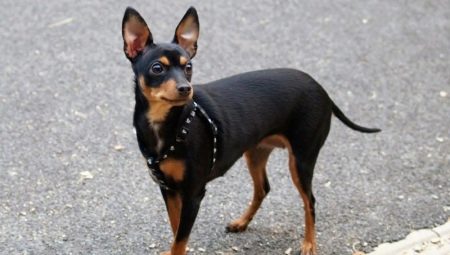
Prague rats are better known as Czech ratliks. Most Russians do not even know about the existence of such a breed. These funny kids are often confused with Chihuahua, Pinscher and Toy Terrier.
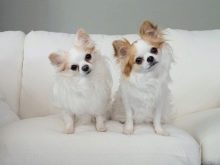


Origin story
The very name of the Prague Rattle breed already speaks of the purpose of these dogs. During the Middle Ages, they usually did cat work - they caught mice and barn rats, which not only destroyed food supplies in homes, but also carried many dangerous diseases.
The homeland of these dogs is the Czech Republic. The true history of the appearance of the breed is shrouded in numerous legends, so researchers can only say with certainty that Czech warriors appeared in Europe around the Middle Ages.
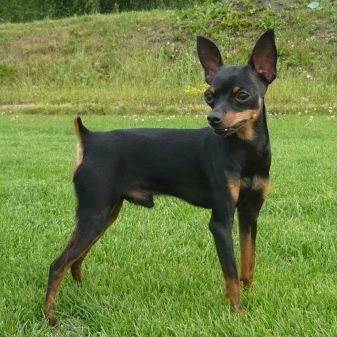

According to one legend, it was these animals that were able to save medieval cities during a massive invasion of rodents.
Due to their physical characteristics, they easily made their way into any hard-to-reach crack and drove rats, which were quite a bit inferior in size to the hunters themselves.
For a long time, the Warliks remained exclusively Czech dogs., the fame of them went beyond the borders of the country, but since the VIII century, they learned about these brave and dexterous dogs, cracking down on hordes of rats, in other countries of the Old World. During that period, the dogs were assigned additional responsibilities - they tasted food from the table of eminent townspeople in order to check the dishes for the presence of poison in them.This was very important at that time, since in the Middle Ages, perhaps only the laziest was not engaged in the study and compilation of poisons. It is known that King Wenceslas IV, famous for his love of carousing in the drinking establishments of the city, going on an amusement excursion "to the people", by all means took a small dog with him... During the feast, the animal freely moved around the set table and tasted all the dishes brought to the sovereign, thus confirming that the food was not poisoned and the king could taste it without fear.

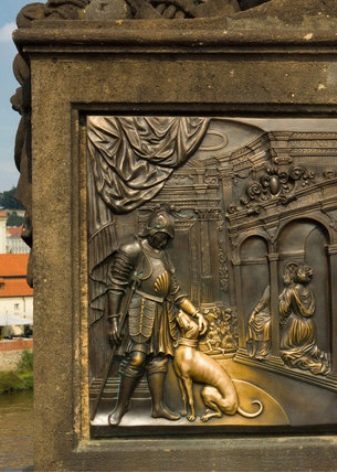
In the middle of the 17th century, the Czech Republic plunged into a serious economic crisis. In those years, the population of rat rats declined sharply, from comfortable, warm palaces, they moved to the gloomy sheds of poor peasants, where they again began to earn their living by catching rats. At the end of the 19th century, a group of enthusiasts tried to restore the population of Czech warliks, but soon the First World War began, followed by the Second, and all their efforts were nullified.
Only in the 40s of the last century, thanks to the joint efforts of Rudolf Schiller and Jan Findus, it was possible to achieve official recognition of the breed and the preparation of the standard.
Nevertheless, this did not save the situation and the number of rat dogs remained very insignificant - today the total number of these dogs does not exceed 3 thousand individuals.
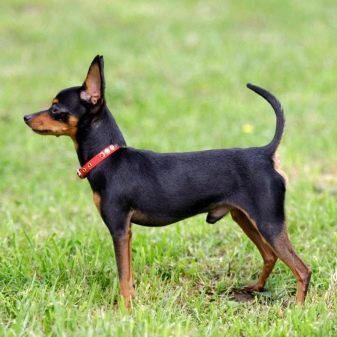
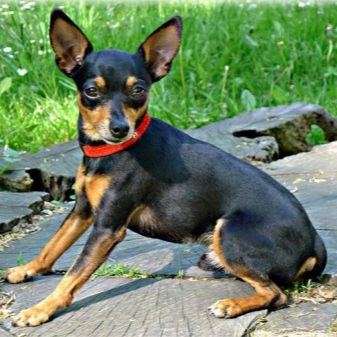
Description of the breed
The Czech ratlik is a real aristocrat, albeit a small one. At first glance, the breed is very similar to the Toy Terrier. Specialists in pedigree breeding pay special attention to the proportions of the torso of ratliks, therefore, in order to identify the ideal representative of the rat-dogs, you will have to take a ruler. It is believed that the normal ratio between the height of the dog and the length of its body should be approximately 1: 1.05. At the same time, the parameter indicating the height of the dog at the withers should be 2 times the depth of its sternum.
The width of the forehead of the dog in accordance with the standards in relation to its length is approximately 1: 1, and the length of the muzzle is not more than half the length of the head.
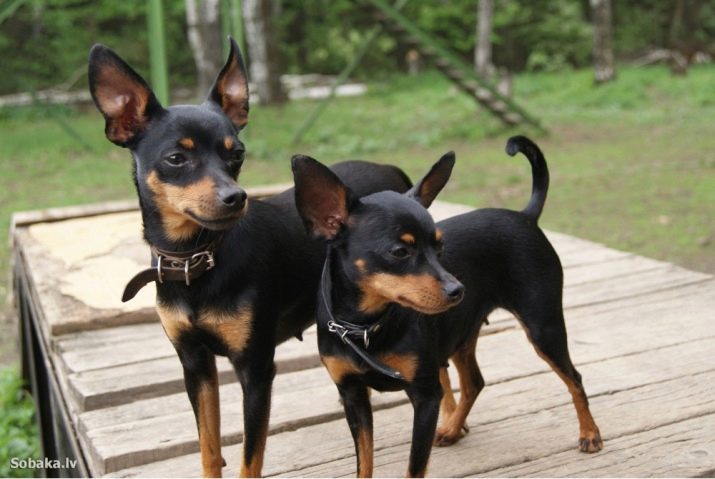
In general, the dog has the following structural features.
- Pear-shaped head. The animal is characterized by a sharply defined forehead and a pronounced occipital protuberance. The muzzle is rather long, with a pronounced general dryness.
- The jaws are very strong, set symmetrically, in the form of a blunt wedge. A scissor bite, like most dogs.
- In Prague rats, the nose is well pigmented. As a rule, its color is in harmony with the basic tone of the coat. The eyes are rounded, slightly protruding, the iris is dark brown, almost black.
- Czech warriors have wide-set ears. It is allowed to drop the tips at a slight angle relative to each other.
- The rat's neck is quite refined, without dewlaps and pronounced skin folds, it is distinguished by a truly noble bend.
- The case is very compact, square-shaped. The back is powerful, perfectly straight. The withers are poorly expressed, the lumbar spine is shortened. The sternum is of medium width, oval in shape. The croup line is elongated, slightly sloping.
- The forelegs of the animal are set rather wide and strictly parallel. The shoulder blades of the Czech ratliks are adherent, muscular, the metacarpals are even, located at a slight slope. The hind legs of the animals also have a parallel set, they are distinguished by the reliability of the articulation angles and the clear muscular expression of the contours. Paws in dogs of this breed are usually arched, round, fingers tightly pressed.
- The animal's movements are springy and free.
- The tail of the Bohemian Warlik is located at the level of the back, during movement it rises upward and curls up.

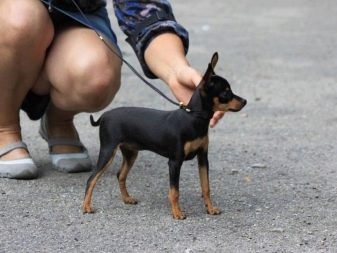
Defective signs include:
- narrowed skull;
- arched back;
- nose without pigmentation;
- excessive tan;
- twisted elbows;
- somewhat elongated body;
- low tail or "falling" to the side;
- bald patches on the coat;
- not completely overgrown fontanelle;
- yellow or blue iris of the eyes;
- drooping ears;
- a whitish spot on the chest with a diameter of more than 2 cm;
- the presence of light marks on the paws;
- height at the withers less than 18 cm and more than 24 cm.
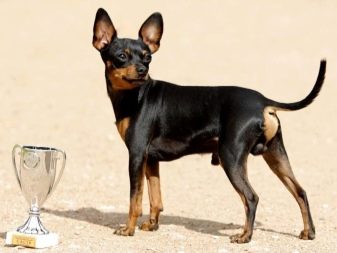
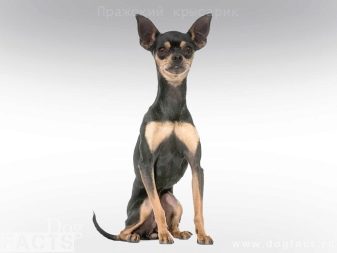
Character
The Bohemian Warlik is often referred to as a professional comforter. This is not surprising, because such cute dogs are sincerely attached to their owner and have the ability to create a comfortable psychological environment in the house. These live "antidepressants" are extremely intelligent, therefore they do not allow empty barking for no reason, they will never annoy their owners with empty "oratorios".
In relation to strangers, as well as persons who are not part of the circle of close people, the ratters are not too disposed. At the sight of strangers, with all their appearance, they show inaccessibility, stiffness and even suspicion.
However, if the owner likes to arrange noisy parties with a large number of invitees, the warlords quickly understand and approve of this, the most important thing in this case is to introduce all the guests to the pet.
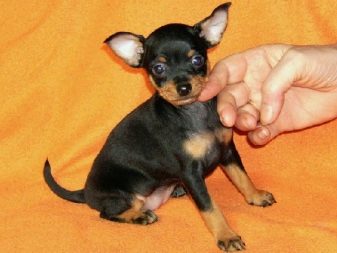
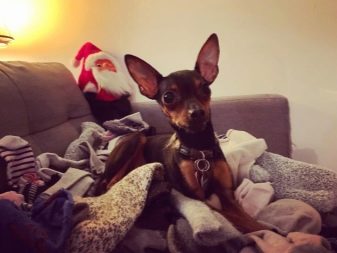
These rat-catchers develop quite friendly relations with cats - whatever one may say, but they are, in a sense, colleagues. But these dogs do not get along with dogs, they can find a common language only with the same small individuals who will not put pressure on them with their authority. It should be noted that physical superiority alone cannot embarrass the Prague rat man, therefore if this miniature dog feels a threat posed by, say, a wolfhound, without hesitation, it will go into an attack with the same activity as if it decided to pounce on an ordinary barn rat.
By the way, about rodents: any decorative chinchillas, hamsters and guinea pigs will always be the number one target for a warrior, so keeping such animals under one roof is strongly discouraged, even if the rodent is in a cage.


Despite the fact that the rats from the Czech Republic are dependent on the owner, they are not devoid of some selfishness and pride.
At first, their miniature dimensions confuse the owners, who see them as funny whims that can be worn exclusively on their hands. In practice, a full-fledged personality lives in the small body of a Czech warlord, requiring exceptional respect for his person.
If you want to have a friendly relationship with your dog, unlearn yourself and prohibit children from encroaching on the pet's property (bed and toys). These animals understand well the essence of the word "mine", so they do not encroach on other people's things, but they also guard their "treasures", entering into a serious confrontation with those who want to take them away.

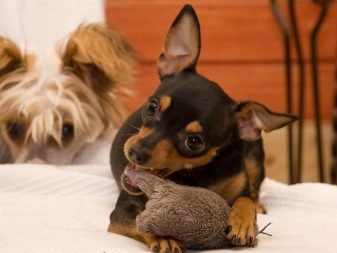
Advantages and disadvantages
Like any other breed, the Prague ratter has both advantages and disadvantages. The advantages include compact size - thanks to its dimensions, you can always go with your pet to where entry with animals is strictly prohibited. Such a dog can feel comfortable both in a private house and in a small apartment.
Rat-rats do not require specialized care, they are easily trained, and absorb information rather quickly.
Animals treat children very well, so you can safely leave babies with such nannies.
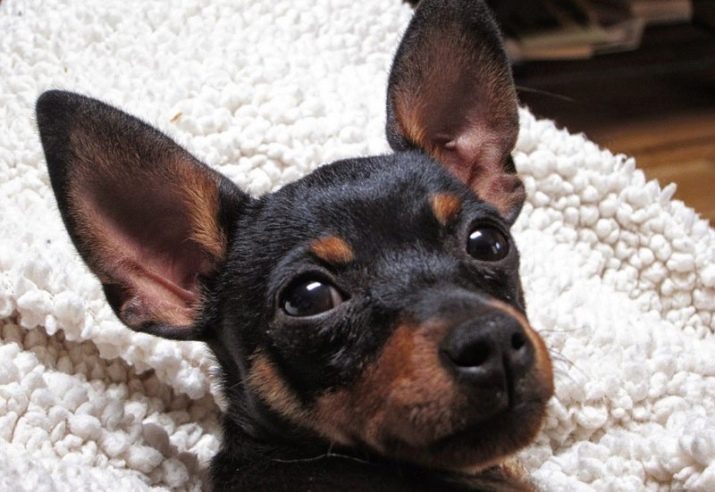
Unlike many other miniature dogs, the Czech ratlik has a brave disposition. He will always defend the owner and the property belonging to him in case he feels a threat. However, small stature is unlikely to allow them to drive away the "enemy".
One of the disadvantages of keeping a rattle is that at the sight of any rodent in the house or on the street, hunting instincts awaken in them and the dog can no longer be stopped. Another disadvantage was the small number of the breed and the excessively high price of puppies of such a dog. - the cost of a pet of this breed reaches 1300 euros.
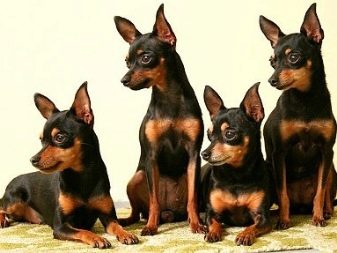
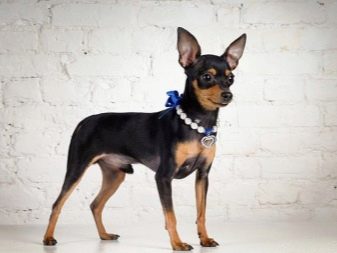
Comparison with a toy terrier
The Prague ratters are very often confused with the toy terrier.These animals have many similarities, but the difference is also pronounced. So, warriors are much more willing to enter into conflict - this is their main difference from the very cowardly toy terriers.
In the old days, rats were used to trap rats and mice, which had an unpleasant habit of settling in rural houses. It would seem - why breed a breed of rat-trap dogs, if cats lived in every village? The answer is simple - in those years, cats were equated with evil spirits, so the responsibility for protecting the house from uninvited guests had to be assigned to someone else.
Toy Terriers were originally bred as decorative lap dogs, they, of course, have moderate hunting habits and, if desired, they are able to catch a bird or a mouse, but for them this is more of a bonus than a vocation.

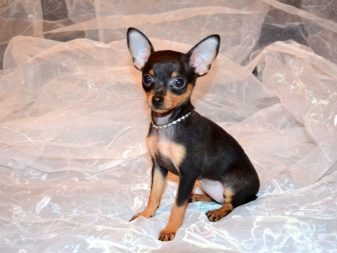
Representatives of both breeds are characterized by extreme self-confidence, but this often works against them, since animals do not realize their size and challenge even large dogs. The outcome of this confrontation is obvious.
Both dogs can be kept in apartments, they get along well with all household members, do not require specialized care and are easily educated and trained.
Outwardly, the dogs are similar, but professionals can easily distinguish one breed from another. The rat's body is more toned and foldable, of a muscular type, which can in no way be said about the Russian toy. The body shape of the latter is a little more exotic, so the breed often takes part in exhibitions and competitions.
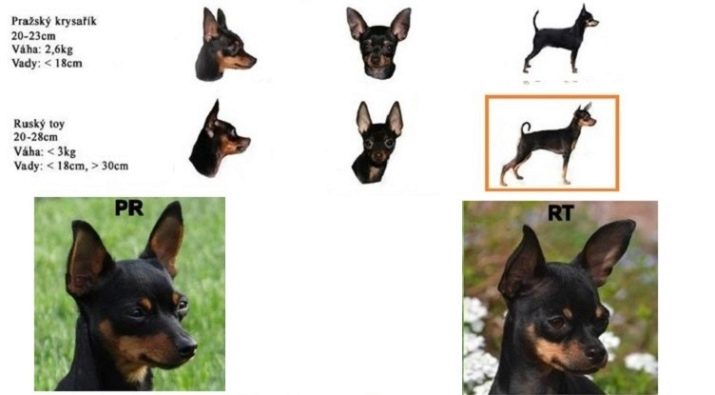
Life span
It is believed that representatives of Czech rats have strong immunity and rarely experience health problems. However, they are prone to certain diseases.
- Diseases of the gums and teeth. In rats, tartar often forms, which leads to a very unpleasant putrid odor from the mouth, and if treatment is not started in a timely manner, it causes inflammatory processes on the gums. In order to reduce the risk of such problems, it is necessary to brush your pet's teeth from time to time and take them to the veterinarian in a timely manner to remove stony deposits.
- Limb fractures. Animals of this breed have fragile bones and at the same time a courageous temperament, therefore, injuries to the metacarpals and forearms are not uncommon for them.
- Pathology of the musculoskeletal system. Rat-rats often face dislocation of the patella. As studies confirm, such pathologies are usually hereditary and are congenital.
- Diseases of the gastrointestinal tract. Usually they are the result of overeating or unbalanced nutrition, so it is extremely important for breeders to monitor what their pet eats and in what quantities.
- Cold. Prague rats do not have a warm skin with a thick undercoat, therefore they are unprotected in conditions of low temperatures and strong winds. In winter, they need clothes, otherwise the pet may get sick.
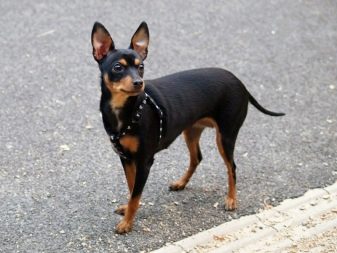

If you take proper care of the warrior, you can prevent the appearance of most of the pathologies in him. Timely vaccination of dogs, prevention of helminthic infestations and periodic treatment against parasites living on the skin - fleas and ticks - are of great importance.
If you adhere to these rules, dogs live near their owners for quite a long time - up to 14 years and even longer.
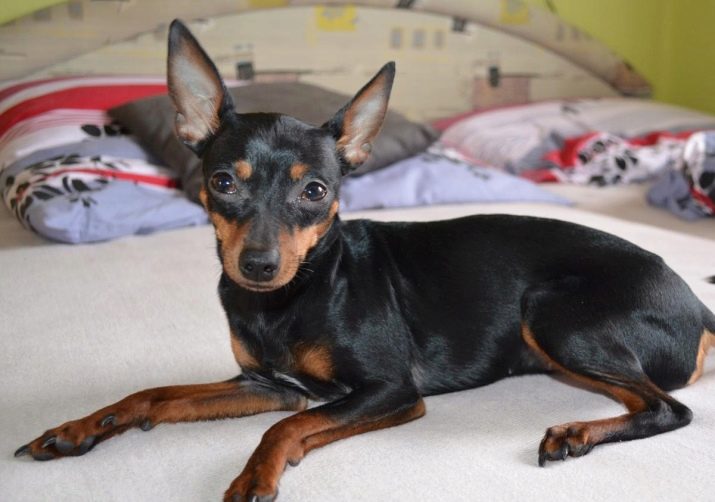
Views
In accordance with the Czech description of the standards, the following varieties of Prague rats.
- Shorthaired. The wool of such ratliks is rather dense and uniform along the entire length, while being shortened and thick. The hairs on the head are shorter, do not grow as densely as on the rest of the body, but without bald patches.
- Long-haired. The awn of the hairs of these dogs is the same dense and uniform in structure, on the face it is short, on the sternum, ears, tail and back of the paws, long shaggy feathers are noticeable.
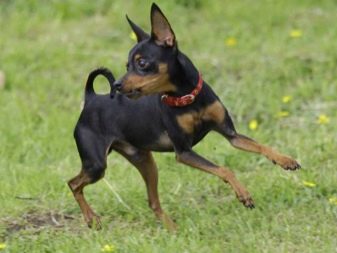
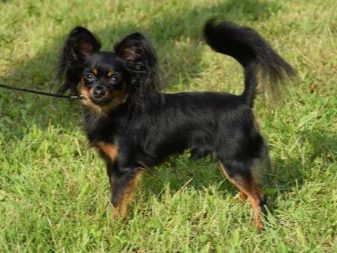
The color of animals can be:
- black and brown and tan;
- redhead;
- chocolate;
- red.
A raincoat shade with a red tan and without any marks is allowed.
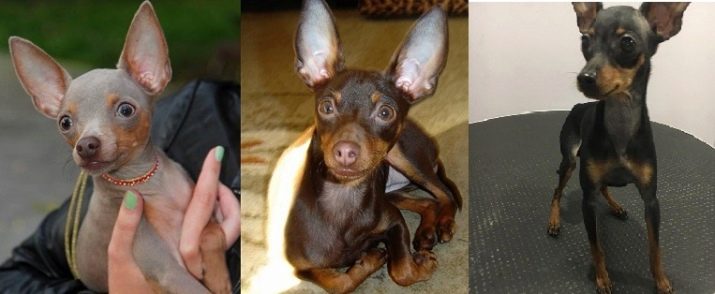
Among modern warliks, there are individuals with blue wool.
Any shade can be measured - that is, with hairs that are not completely dyed. As for the tan, it must necessarily be contrasting, while as saturated as possible.

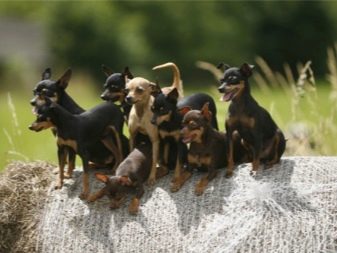
Maintenance and care
Prague ratters are quite peculiar dogs - they are absolutely not adapted for life on the street, nevertheless, their activity requires constant physical exertion and daily walking.
Due to their small size, warriors can live even in a small apartment. At the same time, it is very important to secure the room in advance - to remove all wires, cables, unstable objects, and also to protect any cracks into which an inquisitive pet can whisk.
Even before buying a Prague ratter, you should prepare everything you need for its full life - beds, latex toys, bowls, a drinker, waterproof diapers, a tray, as well as a leash and harness. Despite the fact that these small dogs prefer to relax on the master's sofa, it is still better to provide for them a separate living space, which will be removed from the human recreation area.
If this is not done, then you will surely find toys and half-eaten treats in your bed with enviable regularity.

Decorative pets houses can be purchased at any pet store. It is best to give preference to structures with a sturdier observation deck on the roof, since these dogs do not like to jump on small surfaces. It will not be superfluous to throw a warm blanket into the couch - the rats like to wrap themselves inside any free-lying piece of fabric, equipping it with a kind of burrow.
Immediately after the warlik moves to a new place, it is necessary to decide on his toilet. There are two options for solving the problem - either the street or the diaper. If you choose the first option, then you should take into account the fact that dogs of this breed have an accelerated metabolism, and patience is not typical for them. You will have to walk your pet several times a day, otherwise he will be forced to do all his "business" in the apartment. This option is preferable for dogs living in a private house with the possibility of self-walking. If you do not have your own plot, and all family members are too busy and cannot organize frequent walking of the animal, it is better to immediately accustom it to a tray or absorbent diapers.
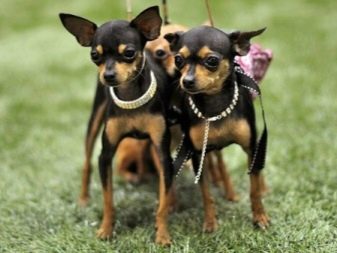

The wool of the Prague ratter does not require any specialized care - these animals shed seasonally twice a year. The very first molt usually begins at 3-4 months of age. During this period, you need to comb the animals every day, the rest of the time, 2 procedures per week are enough. Usually, special furminator brushes are used for this, which allow not only to get rid of dead hairs, but also massage the skin of the pet at the same time.
They bathe Czech warriors as and when necessary. If you resort to washing procedures too often, then it is possible that the structure of the coat will deteriorate and the skin of the animal will dry out. In the warm season, you can allow your four-legged friends to splash in a natural pond or pool - dogs are very fond of water.
After bathing, it is imperative to rinse the rat with clean water to remove the remnants of algae and bacteria living in the pond.
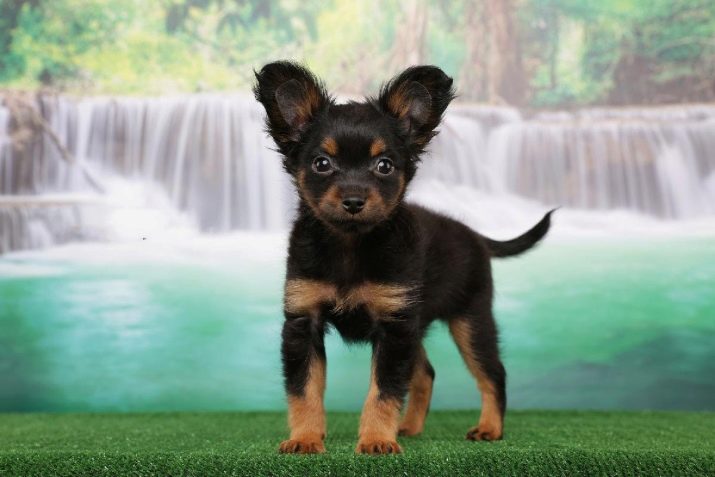
Ears are generally not a problem for dogs as they are well ventilated, although it is a good idea to check your ear funnels weekly for trauma, inflammation, and excessive sulfur discharge. After the cleansing procedure, they can be surface treated with boric acid or veterinary lotion.Keep in mind that dogs of this breed are prone to otitis media, so if you notice that the animal began to shake its head often, then it makes sense to contact the veterinarian as soon as possible.
Eye care for the Czech Warlik is minimal. Every morning, dry lumps in the corners of the eyelids should be removed using a cotton pad moistened with a decoction of chamomile. Every 3-4 weeks it is necessary to brush the rats' teeth. This can be done with a brush or rubber fingertips. Pet claws require regular cutting and trimming of the tips with a file, while cutting off the very edge of the claw so as not to damage the blood vessel.

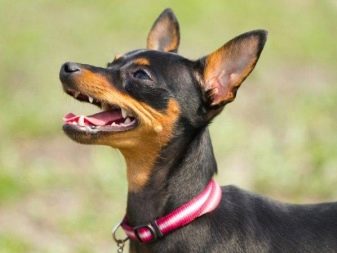
After each walk, you need to wash your paws and treat all cracks on them with an antiseptic ointment. In the frosty season, you need to additionally lubricate the pads with baby cream or heated vegetable oil.
Despite the external decorativeness of the warriors, they cannot be called couch potatoes, therefore they require frequent and long walks. You need to walk a dog of this breed twice a day for at least an hour. Animals must be walked on a leash. If you remove the strap during a walk, then this threatens the dog with great trouble, given their ability to react to any rodent and their tendency to incite conflicts with relatives.
At subzero temperatures, animals need to be walked in special overalls and shoes.
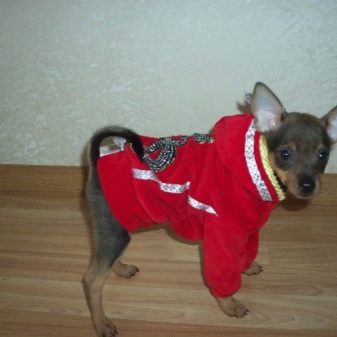
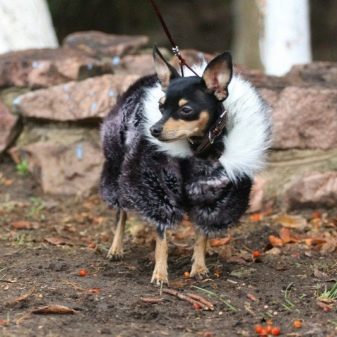
What to feed?
The owners of any dog make for themselves a decision to feed the pet in one of two ways - either "natural" or dry food. Rat rats are no exception, because the breeder has the right to decide for himself what the pet's diet will be based on his capabilities and preferences. Dry food can significantly save the breeder's time for cooking, they are enriched with vitamins and minerals and have a balanced composition. Preference should be given to products of at least premium class - such mixtures are made from the highest quality products, they do not contain preservatives and flavor enhancers.
With natural feeding of animals, it is necessary to include such foods in the diet.
- Meat - it makes up at least 70% of the diet. Usually use low-fat varieties - beef, veal, chicken, rabbit or horse meat.
- Fish - white, low-fat varieties such as hake or cod are suitable for feeding animals. Red fish and river fish are not allowed to be included in the menu.
- Vegetables - Dog mash includes carrots, pumpkin, squash, or cauliflower raw, chopped or steamed.
- Cereals - boiled rice and buckwheat are suitable for dogs. You should not include corn, barley and wheat in the menu - they are almost not absorbed by the pet's body.




With natural feeding, it is necessary to additionally give the animals complex vitamin and mineral preparations.
Until the rats reach the age of 2 months, you need to feed the babies every 3.5 hours, that is, about 6 times a day. After 8 weeks, the number of feedings is gradually reduced so that at 4-6 months they eat 4 times a day, and at 6 months - only 3 times. By the age of one year, animals are transferred to two meals a day with an interval of 8-10 hours.


Upbringing
Czech warriors need to be socialized from an early age and as soon as the pet appears in the house. The fact is that these dogs are still manipulators, and if you do not immediately set the boundaries of what is permissible for them, then in the near future they will simply "sit on the neck" of their owners.
At the same time, it is extremely important that up to 7 weeks the animal remains surrounded by its relatives - mother and brothers and sisters. The time spent with the family will allow the animals to further understand their place in the canine community and teach them how to build a style of behavior with other animals.
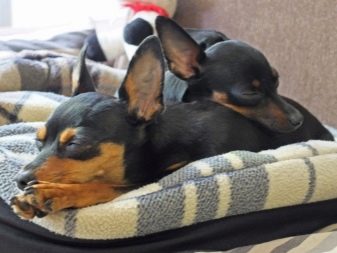
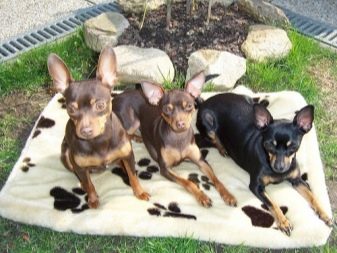
In all other respects, the Prague ratters are the most typical lap dogs, who are ready to learn anything for praise and a tasty treat. This trait should be actively used during pet training.
Keep in mind that when raising a dog, under no circumstances is it allowed to use loud shouts and physical measures on the dog.
Firstly, this can harm the psyche of the pet, and secondly, you simply discourage the pet from further desire to work in tandem.

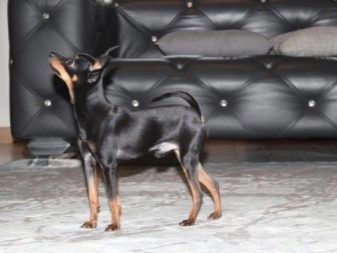
A common mistake breeders make is not being able to restrain their emotions at the sight of a cute indoor dog. Her touching appearance makes the owner "give up slack", and cunning rat-rats will never miss an opportunity to turn such a situation to their advantage. Keep in mind that you need to treat the activities with a positive, but try not to pamper your pet, otherwise later you will only have to grab your head from the destruction and small dirty tricks it has done.
Usually these dogs go through the most general training course, as well as training in sports disciplines. Best of all, they show themselves in catch-up.

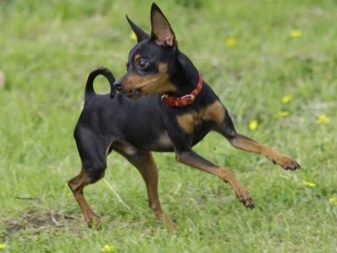
Owner reviews
Reviews and characteristics of the owners of the Prague ratters are the most positive. According to them, these are kind and loyal dogs that, if necessary, can defend their owner, and besides, they will help to get rid of uninvited rodents in the house. However, the paucity of the breed and the high cost lead to the fact that unscrupulous sellers constantly appear on the market who are trying to pass off other breeds of animals for the rat.
To reduce the risk of being cheated, it is worth buying puppies only from reputable kennels.
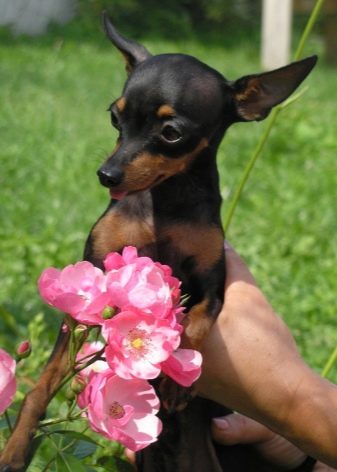
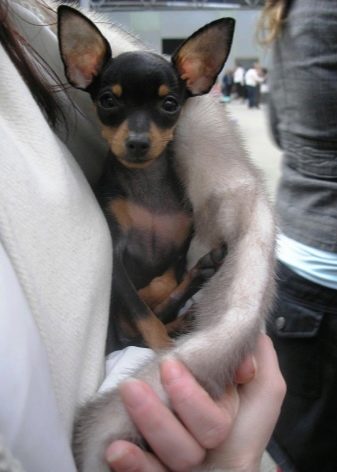
Representatives of this breed are not cheap at all, but such an acquisition can be considered as a profitable investment - the cost of these elite class dogs reaches 200 thousand rubles.
A story about the breed in the next video.







































Wow! Mini Bohemian Shepherd Dog. I will definitely take him, and also a bohemian woman and a Mongolian wolfhound)